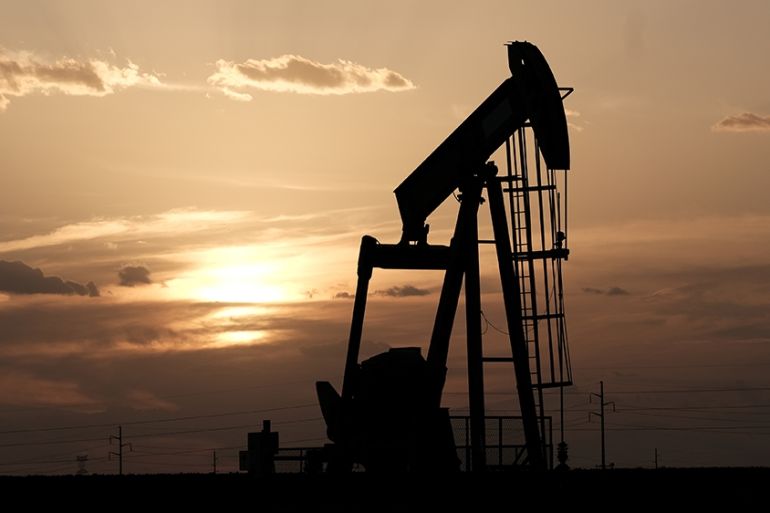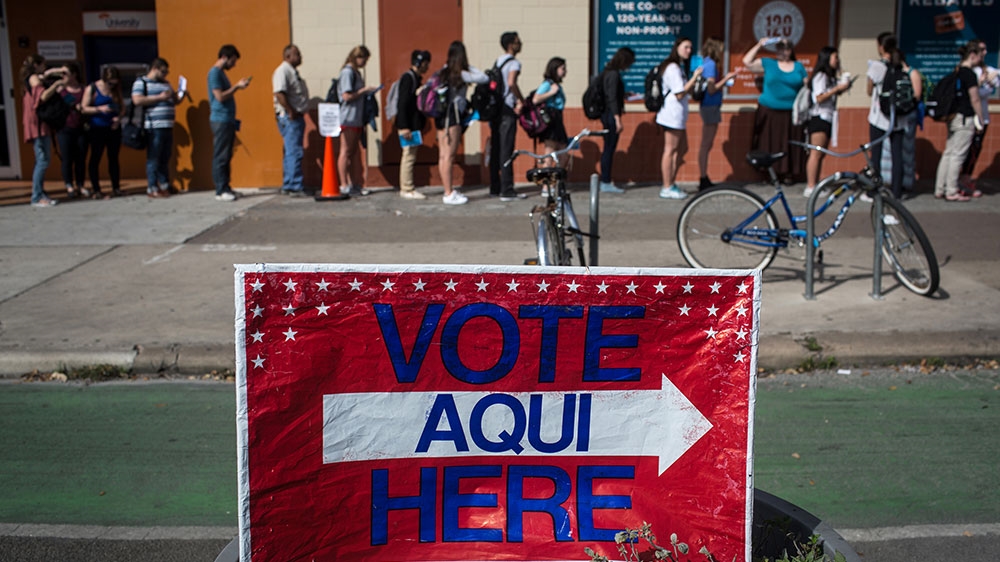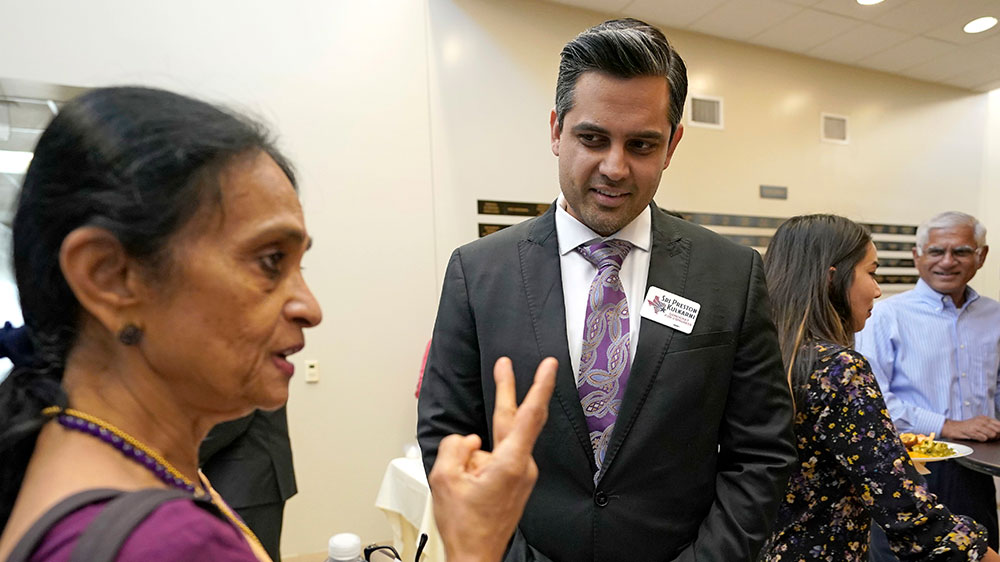Diverse suburbs have reliably red Texas losing its GOP hue
Few are ready to paint Texas blue, or even purple, quite yet. But it’s a possibility that scares Republicans.

Houston, Texas – The Lone Star State, for decades a reliable red state on the Republican Party’s electoral map, is fast losing its rosy blush, and immigrants are hastening the trend.
Few prognosticators are ready to paint Texas blue, or even purple, quite yet. But it is a possibility that scares the daylights out of Republicans.
Keep reading
list of 3 itemsUS elections 2020: When are the debates, primaries, conventions?
US election: Super Tuesday in the spotlight
“If Texas turns back to a Democratic state, which it used to be, then we’ll never elect another Republican [president] in my lifetime,” Republican Texas Senator John Cornyn warned recently.
Demographic shifts
What is keeping Texas Republicans up at night is simple demographics.
Republicans remain strong where Texas is on the wane – places like the “Pine Curtain” of East Texas, culturally and economically less “Texan” than Deep South, and the depopulating ghost counties running west and northwest from Wichita Falls to the New Mexico line.
Meanwhile, the state is urbanizing – in 2016, only about 3.7 million of Texas’s 28 million people lived in a rural county, and that number is shrinking fast. Democratic margins in the cities are not yet wide enough to overcome red majorities in the rural counties and in some suburbs, but that’s changing.
For one thing, the state is becoming more Hispanic, both via immigration and natural population growth. Between 2010 to 2018, the number of Hispanic Texans increased by 1.9 million while that of white non-Hispanic Texans went up only 484,000. Non-Hispanic immigrants are also reshaping the Texas political landscape. During the last decade, the number of Asian Texans increased by 473,000.
A report last week by the Pew Center found that more immigrants than ever are eligible to vote in 2020’s US presidential election. Pew says more than 23 million immigrants, about 10 percent of the electorate, will be eligible to vote this year, a record high.
When, not if
If current trends persist, a blue Texas is a when and not if proposition.
To hasten that day’s coming, the state and national Democratic Party is working to mobilise the Hispanic vote. The hope is that Latinos, stung perhaps by President Donald Trump‘s nativist rhetoric, will feel a new urgency this year.
After 2018, Texas Democrats set out to register 2.6 million new voters and mobilize the 2.4 million registered voters of colour who sat that election out. The effort appears to be paying off. After nine days of early voting this year, all 10 of Texas’s largest counties have seen higher turnout among Democrats than in any other primary since 2012.

Battle for the suburbs
With Texas evenly divided between blue metros and a red countryside, the suburbs are the new battleground. The good news for Democrats is that many Texas suburbs are no longer the lily-white enclaves of the 1950s, or even the 2000s.
“Suburbs have been the almost exclusive territory of Republicans since the 1980s but demographic changes by immigrants from Latin America and Asia have slowly parted ways with the Republican Party, giving Democrats a chance to make inroads,” said Brandon Rottinghaus, chair of political science at the University of Houston. “Campaigns in these areas have to refocus their attention in terms of issues and language to new voters to appeal to a group of rising importance in the electorate.”
One has to look no further than Fort Bend County, just southwest of Houston proper, as proof. Just 15 years ago, Fort Bend was a staunch Republican bastion, the seat of power for uber-conservative House Majority Leader Tom DeLay. Today, it is one of, if not the most, diverse counties in the US, almost equally divided between African Americans, Hispanics, Anglos, and an array of Asians.
Prosperous, educated and multiethnic, Fort Bend County is the Democrats’ dream for Texas’s future. Flat and lush, bisected by the Brazos, Texas’ longest river, the county was once the heart of Texas’s brutal sugar plantation country. Today, it is a warren of idyllic master-planned communities centred on Sugar Land’s mixed-use town centre.
In 2016, Fort Bend became the first suburban county to align with the cities. Two years after that, Fort Bend Democrats conquered county government, with Asians at the forefront. KP George, a native of the village of Kokkadu in India’s Kerala state, was elected county commissioner.

Meanwhile, Democrat Sri Preston Kulkarni is vying to represent Fort Bend County and a swath of other less-diverse south Houston suburbs in Congress. A former diplomat, Kulkarni is the son of an Indian-born author and Rice University lecturer and a white American woman descended from Republic of Texas president Sam Houston.
In 2018, after his campaign door-knocked, phone-banked and rallied in English, Spanish, Telugu, Kerala, Cantonese, Vietnamese and a host more of the county’s 100 languages (six of which Kulkarni speaks himself), Kulkarni fell just five points short of unseating GOP incumbent Pete Olson in what was until quite recently a safe Republican district. Kulkarni’s micro-targeting of each of Fort Bend’s immigrant communities was key – time and time again, his campaigners were told that this was the first time anyone had reached out to them in their own language.
“I’m not speaking broadly, like ‘Asian,’ or ‘Latino,’ – but specific, like Mexican, or Salvadoran, or Ismaili Muslim, or Gujarati, or Malayali Christian, or Malayali Hindu – all of these people need to be reached out to individually,” Kulkarni said in 2018. “You’re talking to somebody based on a shared sense of community or experience. The difference here is we’re not just trying to get votes, we’re trying to build a community. We want to make sure that all this diversity in this district is built into a coalition that makes us stronger.”
This year, Olson is not running and Kulkarni is at it again. His principal primary foe is Derrick Reed, an African-American former prosecutor and labour litigation lawyer from Pearland, an increasingly diverse but still staunchly Republican suburb in adjacent Brazoria County. The winner could face a scion of Houston’s old GOP guard: Pierce Bush, grandson of one president and nephew of another.
Fertile soil
The conventional wisdom is that Texas is red and will remain so at least through this election cycle. While that seems likely to be true in statewide 2020 races, candidates like Kulkarni are spearheading a blue revolution from the ground up. After picking up 12 House seats in the 2018 elections, and with about 30 more seats up for grabs this year, 2020 could be the year the balance of power flips at the state capitol in Austin.
If it does, it will be because of the increasingly diverse suburbs. Of the 18 Republican seats the Democrats have targeted in the state races, nine are in the Dallas-Forth Worth suburbs and four more are on the edges of Houston’s sprawl.
“Our party is just as diverse as our electorate,” said state Representative Celia Israel, an Austin Democrat and chairwoman of the House Democratic Campaign Committee. “As these competitive House districts change demographically so will their representatives.”
Spooked by the cul-de-sac rebellion, last year Republican donors amassed the $25m Engage Texas campaign with the goal of registering a million new GOP voters. A fool’s errand, according to Texas Democratic Party executive director Manny Garcia. Last year, a laughing Garcia told the New Republic that the million unregistered Republicans they were chasing did not exist. “They’re tapped out,” he said.
It is not like no one saw it coming. As one of the deans of Texas political journalism, Paul Burka of Texas Monthly, put it more than a decade ago, “Demographic change is fertile soil that grows Democrats.”
